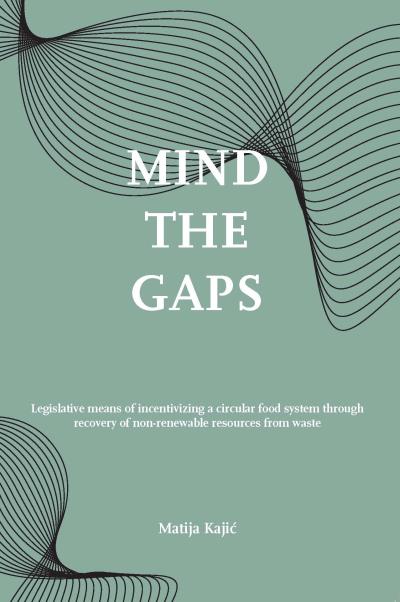Many of the contemporary global environmental problems are rooted in overexploitation of natural resources. This research looks at over-exploitation and a lack of circularity in the context of the agricultural food system. Despite biotechnological methods being available for the recovery of nutrients and organic matter from waste streams, many of these have not yet been applied to their full potential in the EU. The research identifies legislative gaps and analyses how these may be hampering the circular management of valuable organic resources from bio-waste (VFG) and sludge waste in EU legislation and in two EU Member States, the Netherlands and Croatia.
The study first maps legislative and policy gaps and barriers at the EU, national and municipal levels. Second, it identifies which legislative and policy tools are needed to overcome these barriers. The findings indicate a need for: treatment facilities focusing on anaerobic digestion and composting in the short-term; a better balance regarding the quantity of legislation in this field (and its focus); a review of institutional power balance at different stages of the resource lifecycle; and a better balancing of possibly conflicting public interest objectives.
Matija Kajic is a sustainability researcher, focusing on topics related to the biological cycles of the circular economy. She wrote her PhD at Utrecht University, under the Utrecht Centre for Regulation and Enforcement in Europe (RENFORCE) and the Utrecht Center for Water, Oceans and Sustainability Law (UCWOSL). Her research background covers legal and institutional challenges related to a variety of topics, including US/EU illicit tobacco trade, animal feed, biomimicry, recycling and recovery operations and several maritime subjects. Employment outside of academia has diversified her research interests to include the broader circular economy and energy transitions, as well as the role financial institutions play in driving them forward. You can find Matija on LinkedIn and ResearchGate.
Contents
Abbreviations
List of Tables and Figures
Chapter 1 Introduction
1.1 The Waste Challenge
1.2 The Resource Challenge
1.3 The Recovery Challenge
1.4 The Circular Economy Challenge
1.5 The Legislative Challenge
2 Methodology
2.1 Study Design
2.2 Data Collection Procedures
2.3 Analytic Strategy
2.4 Peer Review
2.5 Ethical Approval and Informed Consent
3 Reading Guide
Chapter 2 The General and Biotechnological State of the Art for VFG and Sludge Waste Streams
2.1 Production
2.2 Use
2.3 Collection
2.4 Treatment (Recycling, Recovery, Reprocessing)
2.5 Products Made from VFG and Sludge Recovered Materials
Chapter 3 Legal Basis for EU Action Relevant to the VFG and Sludge Material Streams
3.1 Legal Basis
3.2 Subsidiarity
3.3 Proportionality
3.4 Obstacles Relevant to VFG and Sludge
Chapter 4 Production of Foodstuff
4.1 Critical Raw Materials Law
4.2 Agriculture Law
Chapter 5 Legislative Framework for VFG Waste Stream
5.1 Collection
5.2 Treatment (Recycling, Recovery, Reprocessing)
5.3 Recycled Products from VFG Waste
5.4 Analysis
Chapter 6 Legislative Framework for the Sewage Sludge Waste Stream
6.1 Collection
6.2 Treatment (Recycling, Recovery, Reprocessing)
6.3 Products Recycled from Sludge Waste
6.4 Analysis
Chapter 7 Empirical Research Results
7.1 Conservation of Critical Raw Materials
7.2 Collection
7.3 Barriers to Treatment
7.4 Creation of New Products (and Markets)
Chapter 8 Discussion and Conclusion
8.1 General Findings
8.2 Recommendations
8.3 Concluding Thoughts
Bibliography
List of Cases
List of Primary Sources
Appendix 1 - Interview categories and institutions/companies of each interview participant
Appendix 2 - Sludge Treatment Diagram
Appendix 3 - Municipality-Specific Data on VFG Waste Collection in the Netherlands
Appendix 4 - Municipality-Specific Data on VFG Waste Collection in Croatia
Appendix 5 - Presence of Law and Policy Tools Table
Crotian Summary: Oprez, Raskorak!
Dutch Summary: Let op de gaten!

